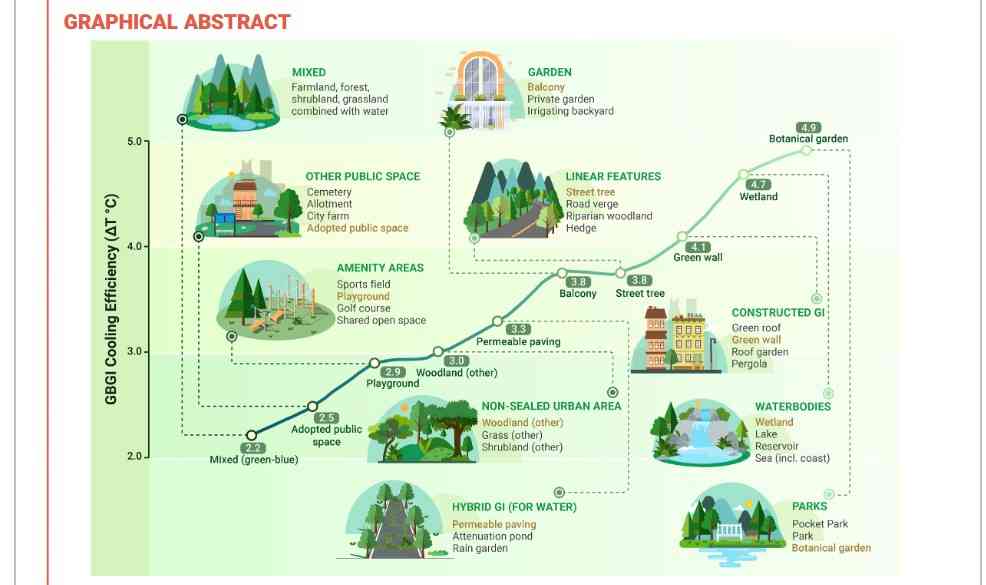Study reveals green and blue infrastructure reduce urban heat

[...]
A study published in The Innovation in March 2024 reviews thousands of papers on green-blue-grey infrastructure (GBGI), such as parks, wetlands, and engineered greening, focusing on their effectiveness in mitigating urban heating and their co-benefits.
Researchers screened 27,486 papers and reviewed 202 based on 51 types of green-blue-grey infrastructure (GBGI) classified under ten broad categories for their cooling benefits. They found that botanical gardens, wetlands, green walls, street trees, and vegetated balconies offered the most efficient air cooling.
Below is an image from the study showing the cooling efficiency of the various green-blue-grey infrastructure (GBGI) types.

A systematic review of hundreds of studies on green infrastructure shows that it regulates urban heating and reduces temperatures through shading, evapotranspiration, and thermal insulation. The cooling associated with green and blue infrastructure is also linked to lower energy consumption in buildings.
[...]